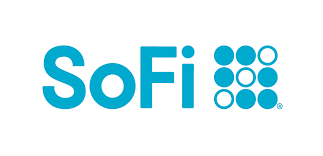Don't Make These Mistakes When Applying for a Personal Loan
If you make one of these missteps, it could cost you hundreds or even thousands of dollars.Image source: Getty Images.
The personal loan process may seem rather quick and easy, and in many ways, it is. For example, it generally takes just a few minutes to apply for a personal loan, and the documentation requirements tend to be pretty standard requests, such as pay stubs or W-2s. Not to mention there are some great potential uses for personal loans.
Having said that, there are plenty of opportunities for making mistakes when applying for personal loans, especially if you’re unfamiliar with how these loan products work. With that in mind, here are three potentially-costly mistakes to watch out for if you’re thinking about applying for a personal loan.
Accepting the first loan you’re offered
This is one of the biggest “rookie mistakes” you can make, and it’s easy to see why people new to personal loans make it often. After all, it may seem logical that any particular borrower could expect roughly the same terms from whatever lender they apply to. However, this is 100% untrue.
In fact, it’s not uncommon for a borrower to find loan offers with a difference of 8 percentage points or more on their loan’s interest rate, even when applying to the best personal lenders. This means that if you apply to a bunch of lenders, offers with APRs ranging from 8% to 16% wouldn’t be unusual. Imagine if you had simply applied to the 16% APR lender and accepted.
Furthermore, there’s really no good reason not to shop around. Most personal lenders allow you to check your personalized loan offers and get pre-approved, including checking your interest rates, in just a couple of minutes and without a hard credit pull that could hurt your credit score. In other words, an hour or so of shopping around for loans could potentially save you hundreds or even thousands of dollars on a personal loan.
Extending the repayment term when you don’t have to
It can be tempting to select the longest loan repayment term possible in order to keep your monthly payments low. However, I’d strongly advise you to consider repaying your loan in the shortest time period you can reasonably afford.
Let’s say that you borrow $20,000 to fund home renovations at an 8% interest rate. Repaying the loan over a 48-month term would result in a $488.26 monthly payment, while a 72-month term would come with a $350.66 payment -- keeping an extra $137.60 in your wallet each month.
However, the longer term would result in you paying $5,248 in total interest, while the 48-month loan would have total interest charges of $3,436. By choosing to pay a little more each month, you’ll save yourself $1,812 in the long run.
Using a personal loan when another option is better
As a final caution, it’s worth mentioning that there are some expenses that are just not well-suited for a personal loan. Taxes and autos are good examples, and here’s why.
If you end up owing the IRS money and you’re unable to pay it right away, you have several options. The IRS will allow you to use a credit card to pay the debt, and there’s no reason you can’t use a personal loan to pay your taxes if you find yourself a little short at the end of the year.
However, many people don’t know that the IRS allows taxpayers to set up an installment agreement, and the process is rather painless. With an IRS installment agreement, you could stretch your repayment time to as long as 72 months, and even with recent increases, the current IRS interest rate is 6%. Simply put, these are better terms than you’re likely to get with any personal loan.
Autos are another good example of a situation where a personal loan is likely to not be the best bet. An auto loan is a form of secured loan, backed by the car it’s used to buy. This is less risky to a lender than an unsecured loan, which is the category a personal loan falls into. Think of it this way -- if you don’t pay your auto loan, the bank can repossess the car and sell it to recoup at least most of its money. A personal lender has no such recourse available. For this reason, if you can buy an asset with a secured loan, you’re more likely to get a lower interest rate by going that route.
Our Research Expert
We're firm believers in the Golden Rule, which is why editorial opinions are ours alone and have not been previously reviewed, approved, or endorsed by included advertisers. Motley Fool Money does not cover all offers on the market. Motley Fool Money is 100% owned and operated by The Motley Fool. Our knowledgeable team of personal finance editors and analysts are employed by The Motley Fool and held to the same set of publishing standards and editorial integrity while maintaining professional separation from the analysts and editors on other Motley Fool brands. Terms may apply to offers listed on this page.


